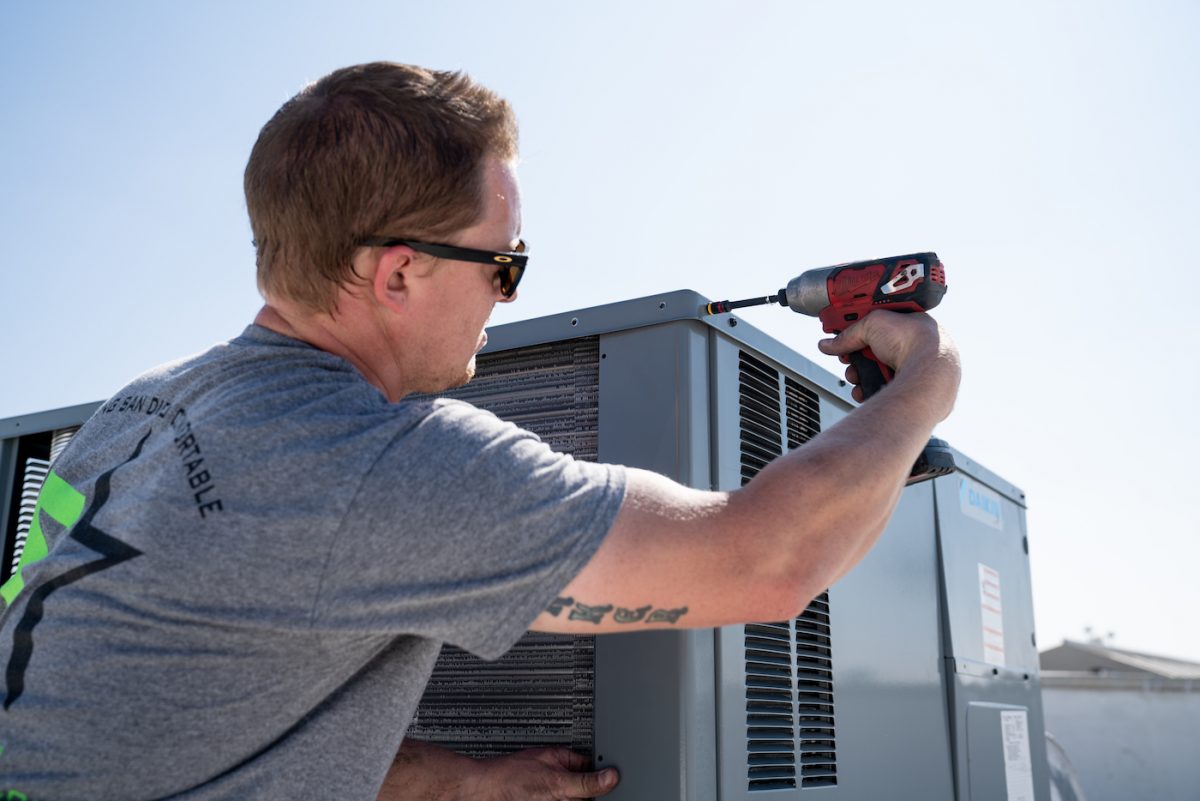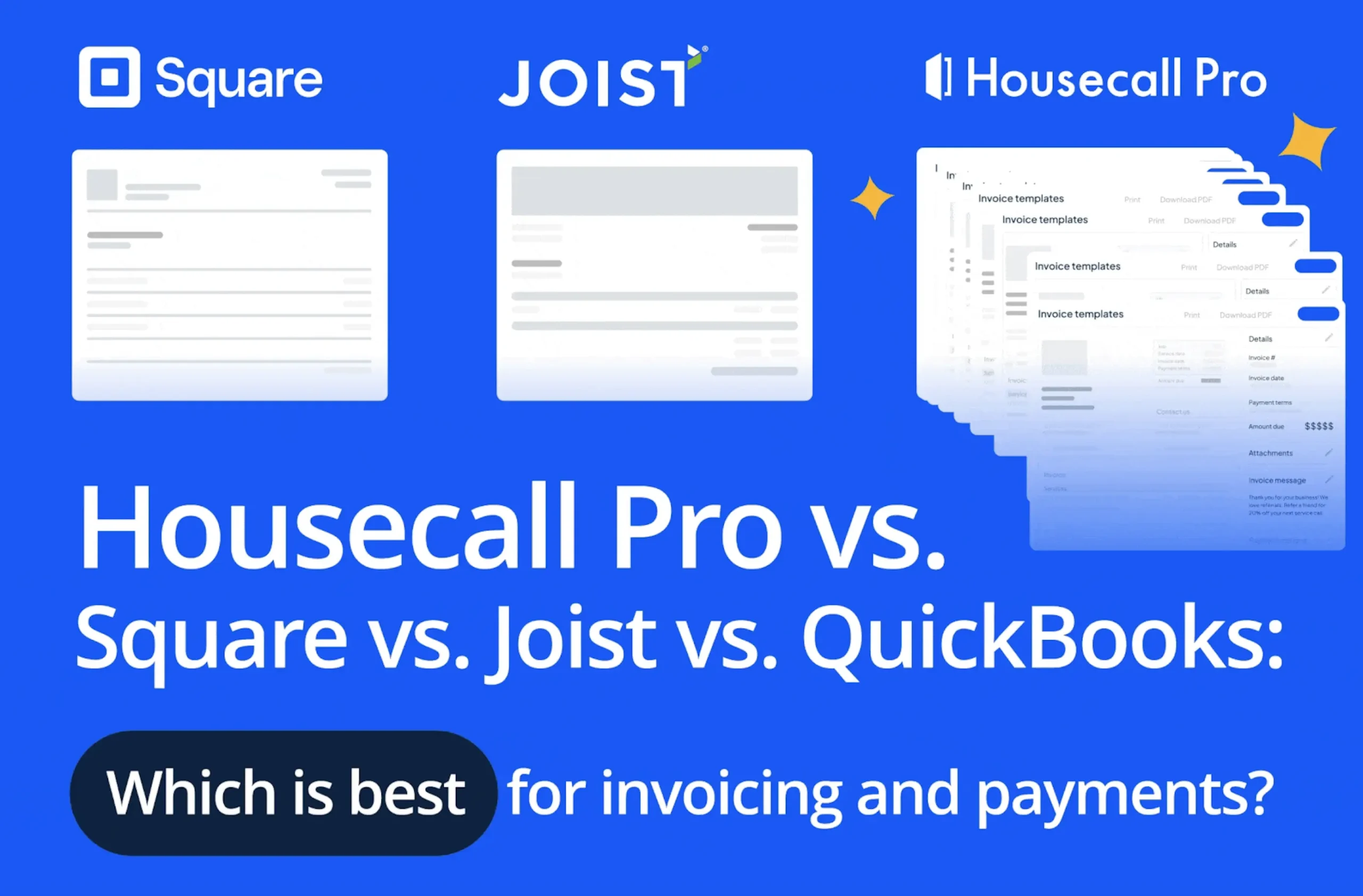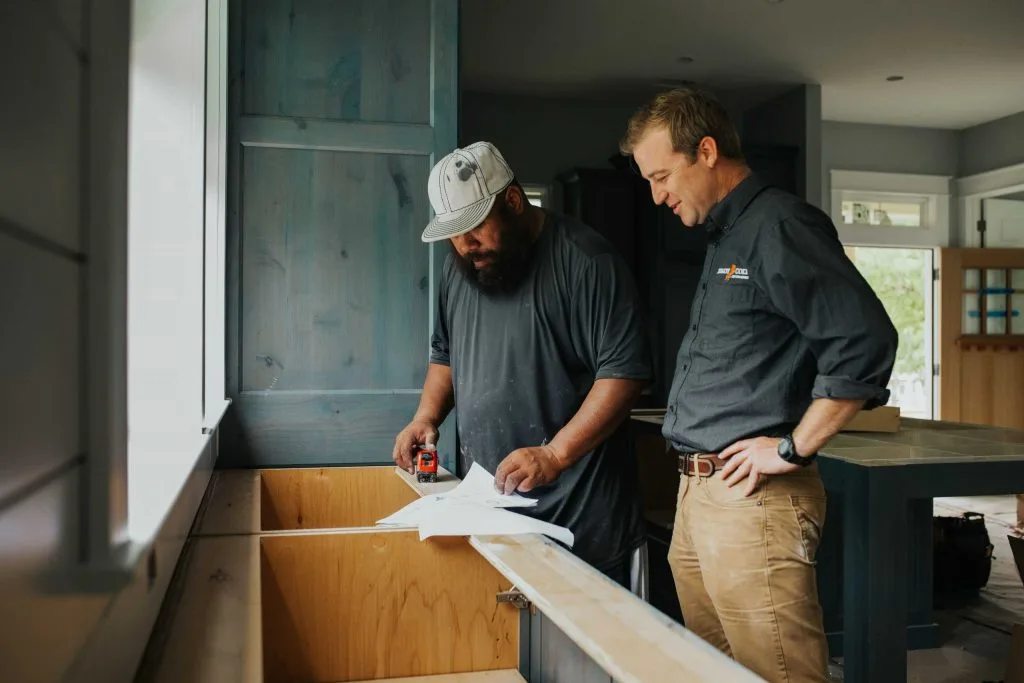
Let’s talk money. In this piece, we’ll look at strategies and business plans to boost your HVAC business profit margins.
Boosting Your Profit Margin By Knowing Your Numbers
Maximizing profit requires one of two things: increasing revenue, or reducing job costs. And an essential part of doing either is knowing your numbers – everything from pricing, labor costs, and overhead expenses, to net profit.
Using a home service business management tool like Housecall Pro makes it easy to keep tabs on your cash flow, customers, invoices, profit margins, and more.
Housecall Pro’s custom reporting dashboard is a flexible tool to help you keep track of real-time data and gain deep insight into your revenue, gross profit margin, equipment costs, and other important metrics. You can also break down performance and measure productivity by role or employee.
Boosting Your Profit Margin by Increasing Revenue
1. Raise Your Pricing
Whether you’re offering hourly or flat-rate pricing, raising your HVAC service price comes with risks that include losing existing customers and outpricing new ones. But one of the risks of not raising your prices is appealing to price shoppers instead of customers looking for the best quality job.
Here are three questions to ask yourself when you’re considering raising your prices.
1. How Healthy Is Your Brand?
If you’re known for providing quality HVAC services, homeowners will expect to pay more.
Signs of a healthy brand:
- You’re getting consistent referrals
- You have a good number of return customers
- You’re showing up in the top 2 or 3 on Google for HVAC companies in your area
- You have one of the highest ratings on Google, Yelp, etc., compared to other companies in your area
If these are true, you may not need to lower your pricing. If you’re known for being one of the top HVAC businesses in your area, it’s quite okay to be one of the most expensive businesses in the area, as well.
2. How Effective Is Your Sales Team?
Can your estimators and sales reps explain why your quotes or services might be higher than the competition? If not, then you might consider more sales training or hiring more experienced sales reps before raising your prices.
3. Are You Breaking Even?
If you don’t know why you’re not profiting, start by figuring out your break-even point.
Here’s how to calculate your break-even point for any HVAC job.
1. Add all monthly costs for running the business, including bills, rent, licensing, equipment, and other overhead expenses. Then, divide the total by the average number of jobs you do per month.
2. Estimate how many hours each job requires and multiply it by the hourly labor cost of your HVAC technicians and other staff members, including hourly wages as well as any additional benefits you offer, like health insurance.
3. Calculate the costs of all materials and HVAC equipment required to complete the job.
4. Add these numbers together to calculate your break-even point. Now that you know your break-even point, you need to factor in your desired profit margin and markup costs accordingly.
Bonus: HVAC Technician Salaries
As an HVAC business owner, how much should you pay your HVAC technicians? Per our research, the average salary for an HVAC tech in the U.S. is $24.57 per hour or around $55K a year, but this average varies greatly from state to state. See the average salary of HVAC techs in each state.
Salaries also vary based on whether or not you’re offering a straight salary or a performance-based program. (We outline why you should consider bonuses based on revenue goals in our guide to training home service techs to be sales professionals.)
2. Increase Your Marketing Spend
A lot of HVAC companies don’t do much marketing because between referrals and being found online, they don’t see the need. But you can’t truly grow from referrals alone.
Referrals are a huge part of our business — those loyal customers — but how do you get that customer to begin with?” asks Matt Mauzy, owner of Mauzy Heating, Air & Solar on an episode of our Pro Talk Podcast.
“A lot of times it doesn’t come from a referral, you’ve got to market, and I would encourage people to develop a marketing plan and just get behind it, take that leap, take a loan out to put together a marketing program.”
One year, Matt decided to invest 7% of what he believed his company would gross the following year on marketing. And the return was amazing, so they spent 7% the following year and then went up to 10%, which Matt calls “aggressive growth mode.” Through this and other strategies, he grew his small business to over $20 million a year in sales.
3. Promote Recurring Service Agreements
Sell your customers on the merits of consistent service and add new income month after month. You increase the lifetime value of each customer and the number of recurring service calls. Learn more about maintenance contracts.
4. Offer financing
Homeowners are less likely to have a pile of cash waiting to be spent on an emergency repair or new installation, especially in a struggling economy. So let your customers break the cost of a job into affordable monthly payments by offering them financing! It isn’t just another way to pay – it increases your customer’s purchasing power and lets them pick the service they want without any compromises.
If you let your customer pay over time, they’re more likely to say “yes” to working with you. Plus, financing helps you increase the size of a job and close more deals as a result. Get consumer financing in Housecall Pro on any job between $5,000 and $25,000.
Option #2: Cut Costs
1. Minimize the Cost of Acquiring New Customers
Customer acquisition cost is the amount you have to spend on advertising and sales to get one new paying customer – and it’s often a significant cost that can eat into your profit margins. In fact, one report found that acquiring a single new customer costs between $200 and $300. Try minimizing this expense by closely tracking your acquisition costs for new customers and shifting marketing budget towards types of advertisements that work.
2. Add Value Instead of Offering Discounts
There’s a time and a place for providing discounted services – for instance, during a serious lull in the off-season or to reward customers who give you referrals. However, most of the time, you should try to avoid lowering your rates – especially if you’re looking to boost your average HVAC profit margin.
Communicating added value could mean throwing in an added bonus that won’t cost you anything, like beefing up their warranty or priority service in the case of an emergency.
Business plans that involve direct mail and email marketing can also be effective to fill up your schedule during the off-season and free you up to service new customers who are more likely to contact you during the busy season. Housecall Pro offers follow-up emails and postcards to be automatically sent to your customers.
Tips From HVAC Business Owners to Boost Profit Margin
In Housecall Pro’s Facebook community, other HVAC contractors and owners like yourself shared their thoughts on maximizing profit margin on HVAC services without lowering service price:
- “Get into a higher market. Successful businesses don’t need a lot of customers, we just need the right ones.”
- “Start building up your service and replacement market and get out of new construction if the profit margin is low there.”
- “Build your customer service and sales up.”
HVAC Business Owner Salaries
Now that you’ve learned to boost your profitability and profit margin, how much should you be bringing home?
According to a 2018 survey from connecteam.com, the average HVAC business owner’s salary in the U.S. is $598K a year while the median salary is just $75K. The average salary is skewed by a couple of business owners making 3 to $20M a year.
Success Group International, a consulting firm for the trades, estimates that the average income for a heating and air conditioning company owner is between $35K and $75K a year — usually about 6% of the overall revenue of the company. If you do some math, this means the average HVAC company is bringing in between $580K and 1.25M a year.
There are also many examples within the residential and small commercial HVAC industry of companies surpassing the $2M mark and beyond. Per SGI, the owners bring in over $100K a year.






